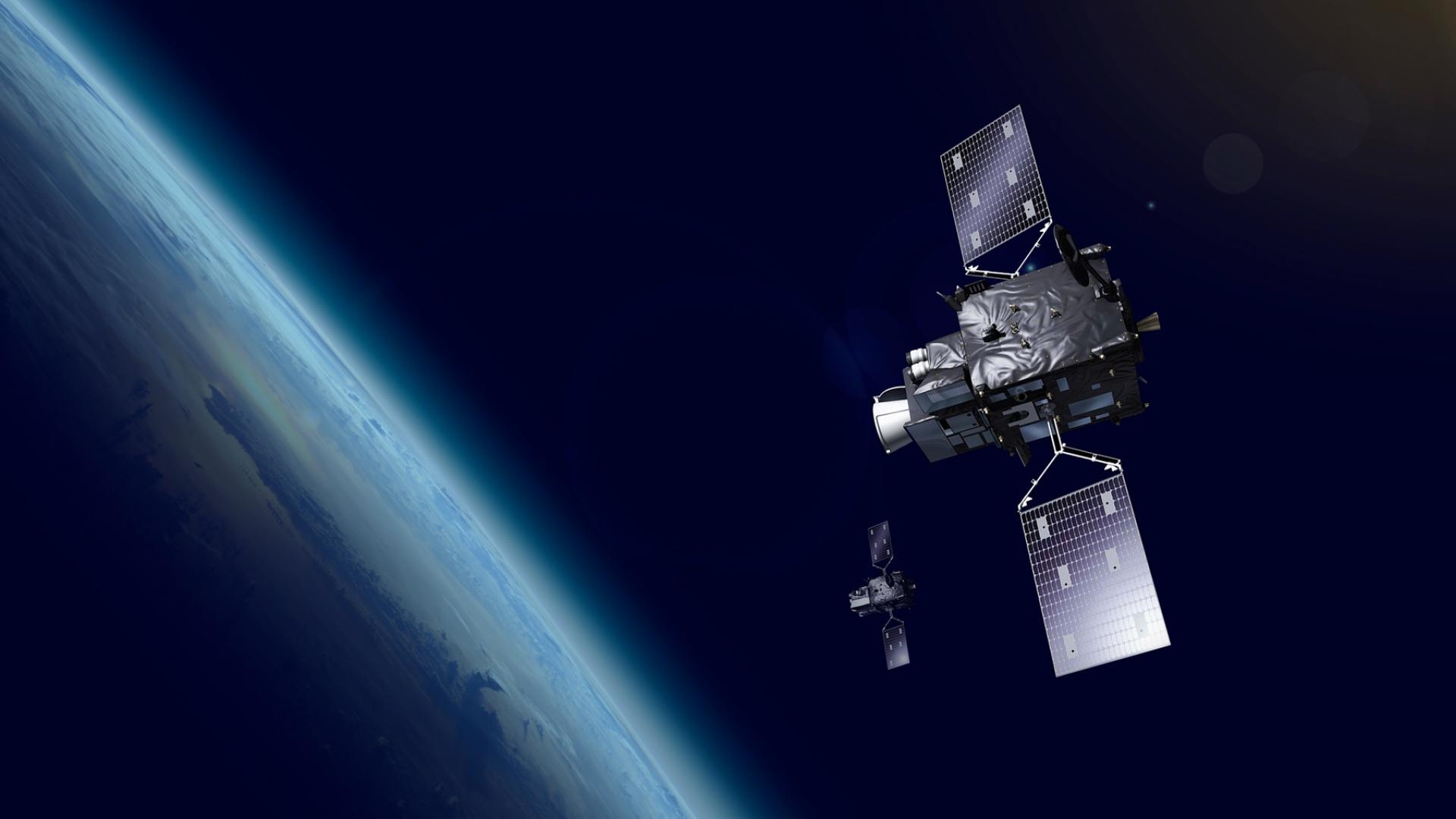WASHINGTON — European weather satellite operator Eumetsat has shifted the upcoming launch of a weather satellite from an Ariane 6 to a Falcon 9, a move that surprised and frustrated European space officials.
In a statement late June 28, Eumetsat said the Meteosat Third Generation-Sounder 1 (MTG-S1) geostationary weather satellite will now launch on a Falcon 9 in 2025. The spacecraft was planned to launch as soon as early 2025 on an Ariane 6.
“This decision was driven by exceptional circumstances,” Phil Evans, director-general of Eumetsat, said in a statement, but did not elaborate on those circumstances. “It does not compromise our standard policy of supporting European partners, and we look forward to a successful SpaceX launch for this masterpiece of European technology.”
The spacecraft is the second in the Meteosat Third Generation line of geostationary orbit weather satellites, after the launch of MTG-I1 on one of the last Ariane 5 rockets in December 2022. MTG-S1 is the first to carry a sounder instrument that can provide vertical profiles of temperature and water vapor to improve weather forecasting.
Eumetsat noted in its statement that MTG-S1 will “bring a revolution for weather forecasting and climate monitoring” and suggested it moved the launch to Falcon 9 to ensure it would launch on schedule.
“Its launch will ensure that national weather services can benefit from new and more accurate data to protect lives, properties and infrastructures,” it stated. “As such, the EUMETSAT member states decided to award a launch service contract to SpaceX for the launch of the Meteosat Third Generation-Sounder 1 (MTG-S1) satellite on a Falcon 9 rocket in 2025.”
The agency did not respond to questions about the change in launch submitted before it issued the statement. The launch change was first reported June 27 by the French newspaper Le Monde.
The change appears to have caught the leadership of European space organizations by surprise, as they publicly expressed their shock and disappointment in Eumetsat’s decision to not use Ariane 6 less than two weeks before that rocket’s scheduled debut.
“Clearly, today is a very disappointing day for European space efforts,” stated Philippe Baptiste, head of the French space agency CNES, in a social media post. He called the decision “quite a brutal change” given the timing.
“I am impatiently waiting to understand what reasons could have led Eumetsat to such a decision, at a time where all major European space countries as well as the European Commission are calling for launching European satellites on European launchers!” he wrote.
He called on the European Commission to implement a form of “buy European” regulation that would require European government missions to launch on European rockets. “This illustrates, once again, the ardent need for strong European coordination on space.”
Josef Aschbacher, director general of the European Space Agency, also called Eumetsat’s decision “surprising” in a June 29 social media post. “It’s difficult to understand, especially as Ariane 6 is well on track for its 9 July inaugural flight, with all proceeding nominally.”
He noted that Eumetsat’s decision would not affect the ramp-up of Ariane 6 launches, assuming the inaugural launch in July is a success. A second launch, which would be a commercial launch managed by Arianespace, is planned before the end of the year.
Arianespace has an order book of 30 Ariane 6 launches, said Caroline Arnoux, head of Ariane 6 programs at Arianespace, at a June 25 ESA briefing. That includes 18 launches of Project Kuiper satellites for Amazon, along with other commercial and government customers.
She said Arianespace envisioned six Ariane 6 launches in 2025, increasing to eight in 2026 and 10 in 2027. The vehicle’s maximum flight rate is projected to be 9 to 12 launches a year.
Lucía Linares, head of space transportation strategy and institutional launches at ESA, emphasized at that briefing the importance of government customers for the Ariane 6. “First and foremost, we have developed Ariane 6 — designed, developed and now coming to the inaugural launch — in order to serve European institutional missions,” she said. “This is the core reason why the public sector is funding this launcher and why we have guaranteed access to space.”
Eumetsat, though, is not the first European institutional customer to select Falcon 9 for launches, particularly during the “launcher crisis” that has limited European access to space. ESA launched its Euclid space telescope on a Falcon 9 a year ago, followed in May by the launch of EarthCARE, a joint Earth science mission with the Japanese space agency JAXA. Another Falcon 9 will launch ESA’s Hera asteroid mission in October.
The European Commission also selected Falcon 9 to launch Galileo navigation satellites, with one Falcon 9 launching a pair of satellites in April and another pair slated to launch later this year.
Related
Read the original article here
